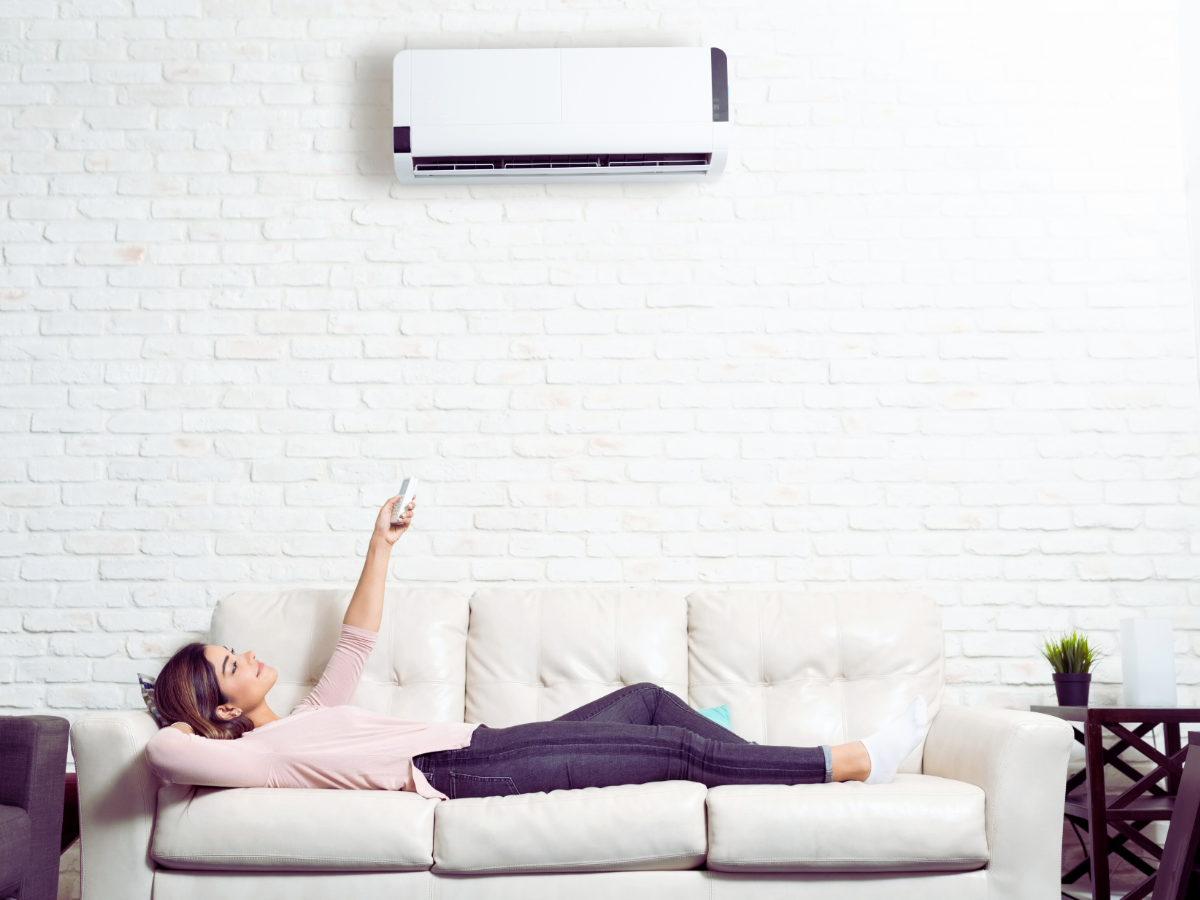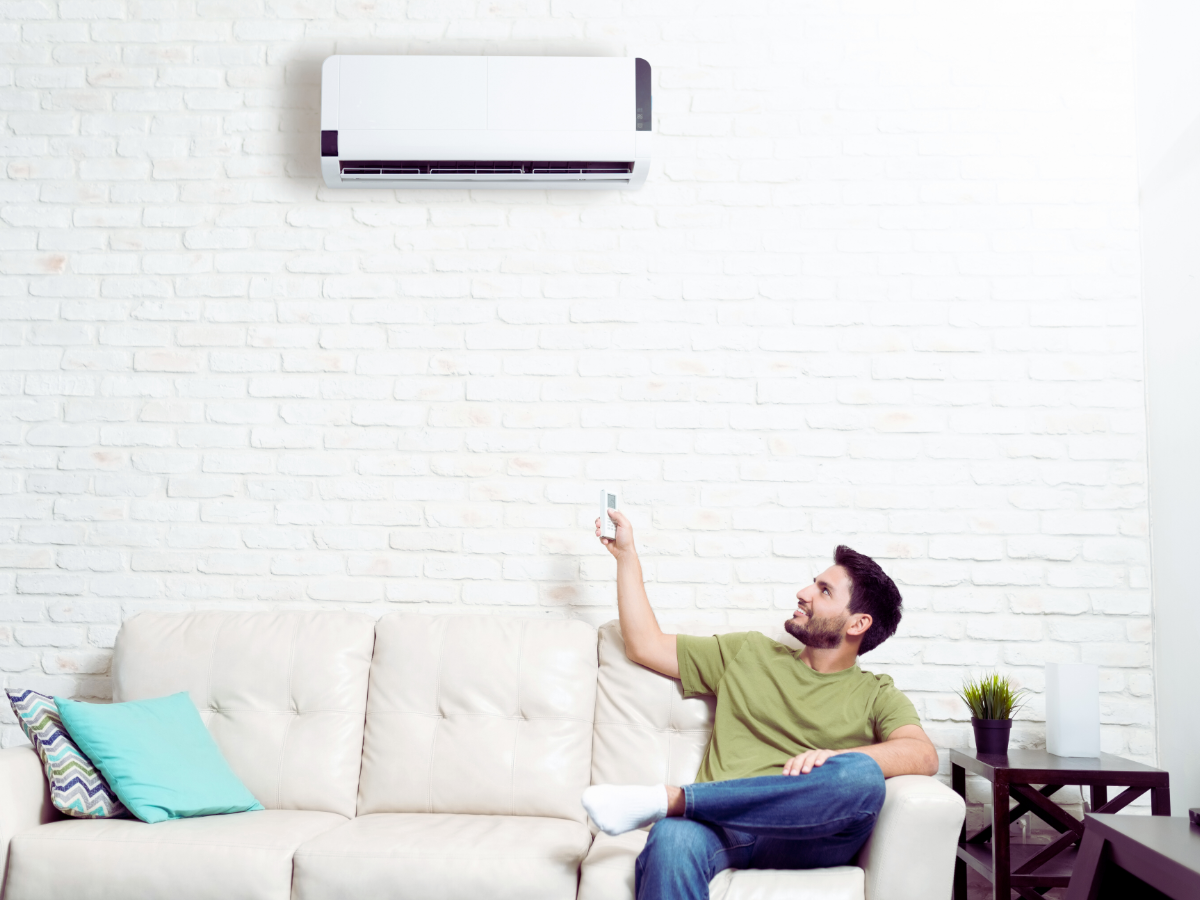 Florida is home to a substantial amount of heat and humidity, and ensuring that homes here are cool and dry is a priority for most residents. There are several ways that this can be done, and many view a mini-split system as the most effective.
Florida is home to a substantial amount of heat and humidity, and ensuring that homes here are cool and dry is a priority for most residents. There are several ways that this can be done, and many view a mini-split system as the most effective.
What’s a Mini-Split System?
A mini-split is a split-system HVAC that results in different rooms and areas of your house being individually cooled and heated in a process that’s called zoned heating and cooling.
Mini-splits normally have no ducts, which are the tunnels, so to speak, that air passes through in many HVAC systems. A significant benefit of a ductless mini-split system is that it saves energy as duct losses can result in 30% of your energy consumption never reaching you.
Instead of ducts, an outdoor unit (condenser) and an indoor unit (evaporator) are connected by refrigerant lines and an electric line while a drain line is connected to the indoor unit. All of that can fit in a hole about 3 inches wide.
How Does a Mini-Split Work?
One of the ways that mini-splits are so efficient is through an inverter-driven compressor. This results in your mini-split making consistent minor adjustments to maintain the preferred temperatures. That’s an improvement over the wider variety of conditions – e.g. temperature swings – that are instead experienced when using a more traditional HVAC system.
A feature of mini-splits that’s particularly appreciated by many here in Florida is that it can also be a dehumidifier, something that traditional HVAC units usually can’t do or do poorly. In fact, if the temperature is comfortable inside but the humidity level isn’t, you can turn on the mini-split’s dehumidification feature only.
Another way that mini-splits show their efficiency is through the transferring, not creation, of heat. During those hot, sticky summer days, they move heat from inside a home to outside. Meanwhile, on those less common cold winter nights, its refrigerant will allow it to absorb outside heat and bring it in, allowing you to enjoy mini-split cooling and heating benefits alike.
Real Benefits That You’ll Notice
 As you read this, you’re likely asking yourself, “Is a mini-split right for me?” Consider these real benefits as you answer that question.
As you read this, you’re likely asking yourself, “Is a mini-split right for me?” Consider these real benefits as you answer that question.
Lower Energy Bills and Tax Credits
A comparison of central air vs. mini-split as far as installation costs go may be a concern as the upfront cost to install a mini-split is usually around $3,000, a price that depends on the size of your home and other factors.
However, the savings on your energy bills will be significant, resulting in it paying for itself in the long run. For example, mini-splits are generally at least twice as efficient as baseboard heating, sometimes multiple times more, and this results in tremendous mini-split energy savings.
Also, you can receive thousands of dollars in mini-split tax credit once you have one installed.
Room-by-Room Control
Enjoying room-by-room control is not only one of the ways that a mini-split is efficient, but it also results in much greater comfort.
For example, Sara prefers her bedroom to be especially cool. However, Bob gets cold easily, and he wants his room to be quite a bit warmer. Both will be comfortable with a mini-split.
Or perhaps you leave pets at home when you go to work and want to keep one room comfortable for them but don’t need to cool or heat the entire house. With a mini-split, you can do that as well.
Regardless of what your specific home’s circumstances are like, if it currently includes areas that are always too hot or too cold, this type of room-specific HVAC will fix that.
Whisper-Quiet Operation
If you prefer a quiet home environment, note that a mini-split provides that as well. In fact, sometimes, this quiet HVAC system’s noise level will be similar to a whisper.
Year-Round Use
With a mini-split, you don’t need separate heating and cooling systems. This one unit will ensure your comfort in all of Florida’s seasons.
FAQs
Can I use a mini-split in winter?
A mini-split can heat your house just as well as cool it, and it can also dehumidify your home 12 months of the year. So, yes, you absolutely can use a mini-split in winter.
Do I need one in every room?
You don’t necessarily need to use a mini-split in every room. Perhaps you have a room that you only use for storage, and keeping it comfortable is a low priority. You can skip that area.
How long do mini-splits last?
Generally, mini-splits will last up to 20 years or sometimes even well beyond that. Conversely, most conventional HVAC units last about 10 years.
That results in another way that a mini-split is likely your best financial option when considering your HVAC-related expenses over the coming decades.
Where will the mini-split units be placed?
It depends, but most mini-split units are either located on the wall, usually about half a foot from the ceiling, or the air’s being dispersed through a grille in the ceiling.
Can I install it myself?
You can install a mini-split yourself, but it’s not recommended in nearly all circumstances, especially if you’re not professionally trained yourself. That’s because it’s a complex process that requires that professional knowledge in order to do it well and ensure that it’s effective and long-lasting.
Also, note that doing this yourself will likely void applicable warranties.
Mini-Split Services Done by the Pros
 If you’d like to get a ductless mini-split installed in your home and start experiencing all of its comfort and financial benefits, One Hour Air Conditioning & Heating is ready to do just that. We serve those who are in Tampa, FL, and throughout the Tampa Bay region, and we’re always on time or you don’t pay a dime, a promise that we 100% back.
If you’d like to get a ductless mini-split installed in your home and start experiencing all of its comfort and financial benefits, One Hour Air Conditioning & Heating is ready to do just that. We serve those who are in Tampa, FL, and throughout the Tampa Bay region, and we’re always on time or you don’t pay a dime, a promise that we 100% back.
Call or message us to schedule an appointment or to ask for our advice on why a mini-split may or may not be for you.